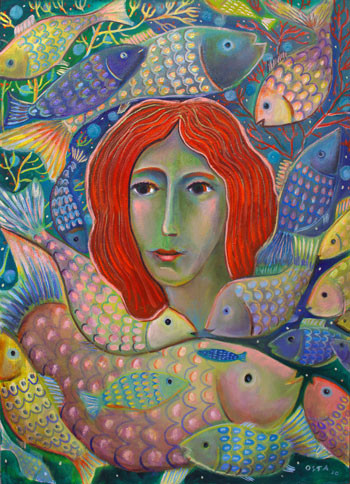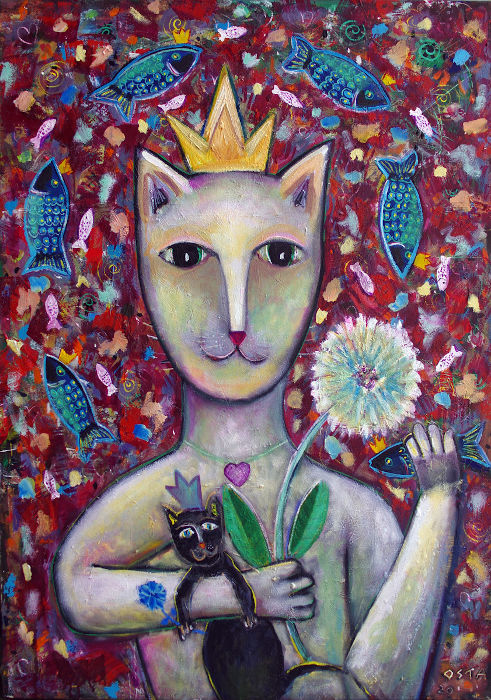by Andrew Osta
When Coronavirus hit the United States earlier this year, I knew that Mexico would suffer greatly as well. Tourism would be affected, businesses would close, our normal cycles disturbed. For the first time in many years, I worried about the future. "Could it be that people will stop buying art?" I wondered. "If financial markets crash, if our currency devalues, who will spend on a luxury like an original oil painting?"
These dark thoughts initially put a roadblock in front of my creativity. One wonders "What's the point of making art when people are dying, when tomorrow is so uncertain?" But then an artist has to do something while in lockdown and so inevitably returns to making art. In my own case, I found that being engaged in creation greatly relieved my anxiety. The process of putting paint on canvas is tremendously therapeutic.

Because it's a generally slow process, there is plenty of time to think, to process information. Painting has the same effect on the mind as sleeping and dreaming, in the sense that one's intimate hidden thoughts slowly get revealed, faced, and re-organized. Painting can become an extended meditation if you allow it too. Not many of us can sit with our legs crossed watching our breath for any significant length of time, but standing in front of a canvas with a brush in hand can be remarkably similar, especially if you do not impose expectations on your creativity but allow whatever emerges to emerge organically.

When I lived in Canada, I spent a year providing a form of art therapy to recent refugees. Some of the people I worked with had witnessed murder and other atrocities. It may be hard to believe that drawing a simple picture could help one overcome such trauma, but it did. At first, patients expressed what they saw in images, which usually lifted a huge weight off their chests. Eventually, they moved on to painting other things – this meant that their minds were no longer stuck in a loop, going over the same traumatic memories over and over. They were now able to move on and think about other things. In a way, life had once again become meaningful to them.

One does not have to be a trained or skilled artist to benefit from the therapeutic benefits of art making. However, for those of us who can't imagine themselves with a paintbrush in hand, simply having some art in your space and looking at it is beneficial. This beauty, this portal into another moment, time, place, or reality disconnects us from the constant negativity we are bombarded with. Looking at a piece of art encourages contemplation, breaks thought cycles, resets the brain, so to speak. Contrary to my expectations, my collectors did not stop buying art during quarantine. If fact, paintings and music are more important now then ever, more essential to our well-being then ever.

It's no wonder that art has been and continues to be an integral part of many sacred traditions, from Hinduism and Buddhism to Orthodox Christianity to the many Indigenous spiritual traditions. Even Islam, which forbids making images of created things, is full of beautiful calligraphy and geometric art. If art has been so deeply connected with the world's spiritual traditions for thousands of years it's because it nourishes and heals the soul. I encourage you to pick up some colored pencils, pastels, or paint and give making art a chance. And if you absolutely can't imagine yourself doing that, take a moment to stop in front of a favorite piece of art in your home, and really look at it. Take a deep breath and allow yourself a moment of rest from the pressure of the uncertainties brought on by the pandemic.

www.AndrewOsta.com
www.Facebook.com/Andrew.Osta
**************

Andrew Osta has long been one of San Miguel's favorite painters. He moved to Oaxaca in 2017, but continues to exhibit in San Miguel. His work is on permanent display in Hecho en Mexico (Ancha de San Antonio #8) and now in La Connexion Gallery (Aldama #3). His images are also available as hand embellished prints on canvas (directly from the artist).
